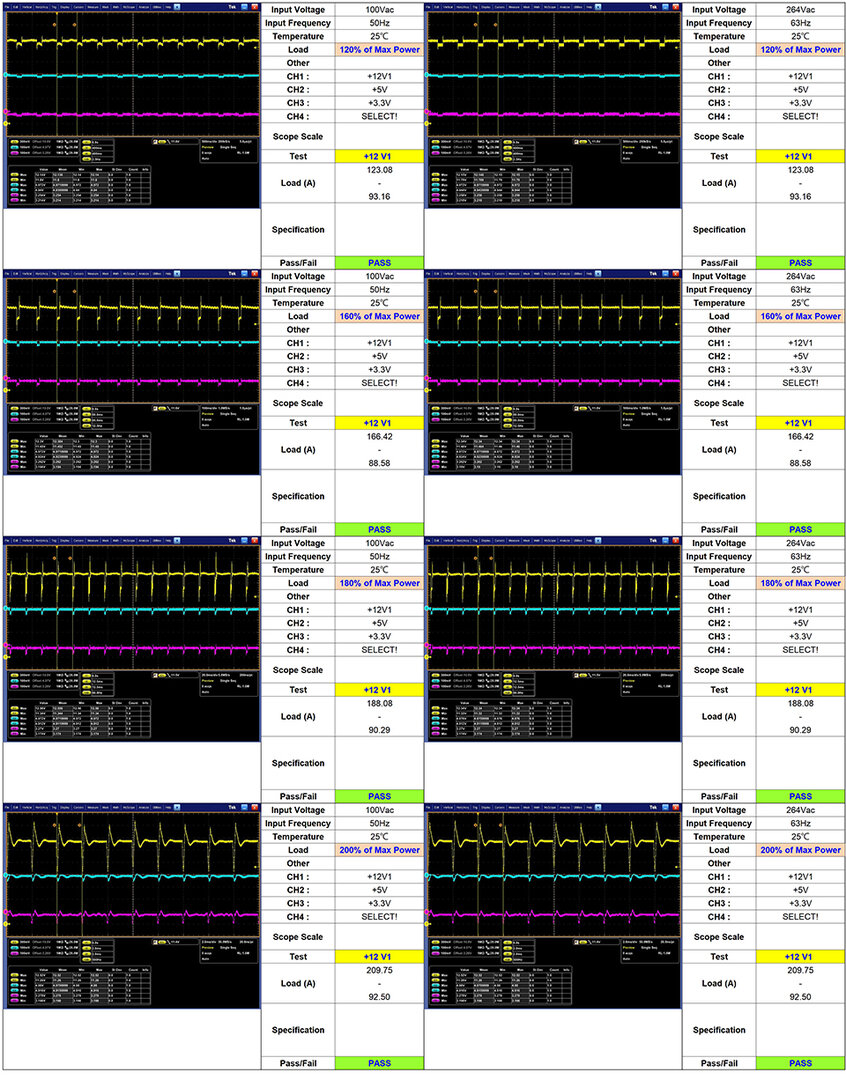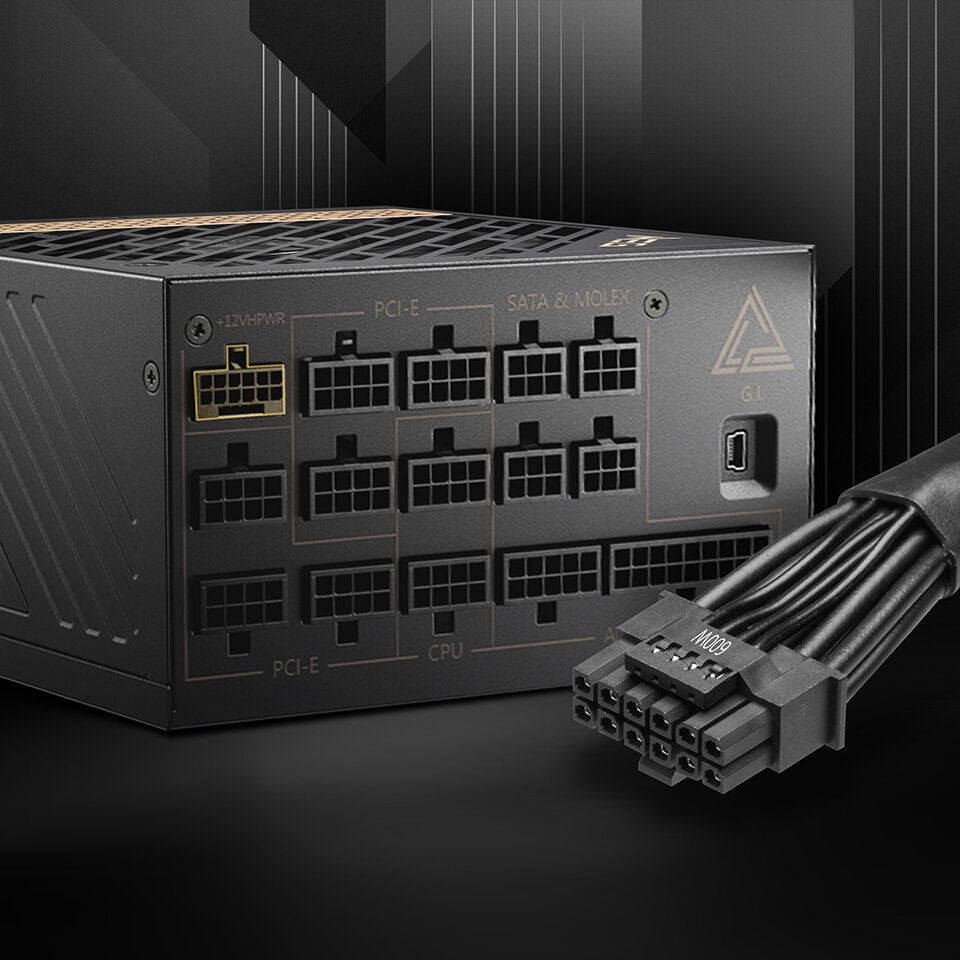Earlier leaks had already suggested it: MSI was the first manufacturer to introduce power supplies based on the new ATX 3.0 specification. Both have one of the new 12VHPWR connectors with 12+4 pins according to PCIe 5.0 for up to 600 watts, up to 2,600 watts can be supplied to the system for a short time.
This is behind ATX 3.0
ATX 3.0 was developed under the leadership of Intel and replaces ATX 2.x after almost 20 years. In addition to specifications for the adaptation of the Alternative Low Power Mode (ALPM), such as that used by Windows 10 and Windows 11 in Modern Standby, ATX 3.0 has one goal in particular: to reliably supply more powerful hardware with higher power consumption, even if the system is once again significantly calls up more than the official TDP of the components would suggest.
ATX 3.0 takes load peaks into account
ATX 2.x has so far ignored this case, whether load peaks above the nominal power could be absorbed by an ATX 2.x power supply depends on the power supply, but not its conformity with ATX. That could lead to big problems. A prominent example from the recent past are the problems with the launch of GeForce RTX 3000 at the end of 2020. However, users should also be familiar with other scenarios from the fact that the system switches off or becomes unstable, although the power supply unit should be powerful enough on paper.
Specifically, ATX 3.0 stipulates that power supplies must be able to provide up to 200 percent of their nominal power. This applies to models with more than 450 watts and/or with the new P12VHPWR connector for graphics cards. Models with a maximum of 450 watts and/or without a P12VHPWR connection must deliver a maximum of 150 percent of the nominal power.
performance according to ATX 3.0 max. duration of the load Percentage of load in total time* power supply units ≤ 450 watts
and/or without P12VHPWR power supply units > 450 watts
and/or with P12VHPWR 100% 100% Infinite — 110% 120% 100 ms 50% 135% 160% 10 ms 25% 145% 180% 1 ms 20% 150% 200% 100 µs 10% * The portion of the peak load at the total usage time depends on the power rating of the power supply. It is required that the power supply unit passes a test run consisting of a defined peak load and “idle load”, the root mean square of which corresponds to the nominal power.
Three concrete examples are intended to make what the specifications say more understandable:
- A power supply with 1,000 watts and P12VHPWR must be able to sustain 1,000 watts , but to deliver up to 2,000 watts to the system for a short period of less than a maximum of 100 µs for 10 percent of the usage time. It must be possible to deliver 1,600 watts for a maximum of 10 µs over a maximum of 25 percent of the usage time.
- A 300 watt power supply without a P12VHPWR must deliver up to 450 watts for a maximum of 100 µs for a maximum of 10 percent of the usage time.
- A 300 watt power supply with a P12VHPWR must deliver for a maximum of 100 µs for a maximum of 10 percent of the usage time deliver up to 600 watts for a maximum of 10 percent of the usage time.
How to test for peak loads
Manufacturers must demonstrate this resilience to peak loads by testing the respective deviation scenario with appropriately adjusted “normal” load between peak loads. A 1,000 watt power supply unit must therefore be able to withstand a load of 2,000 watts for 100 µs (10 percent) and a subsequent “quiet phase” with 817 watts for 900 µs (90 percent), which in root mean square is 1,000 watts and thus the nominal power corresponds.
PCIe 5.0: Up to 3 × 600 watts for graphics cards
The standard makes it clear: Whether an ATX 3.0 power supply uses the new P12VHPWR connector defined by PCI Express 5.0 has a decisive influence on how high the short-term deviation from the nominal output must be.
The background is that PCI Express 5.0 for the first time defined deviations from the nominal power consumption of the graphics card via P12VHPWR. In this case it is up to 300 percent. In other words: A graphics card that draws its power from the P12VHPWR with 12+4 pins can briefly call up three times as much power as its TDP suggests. With a maximum of 600 watts defined via P12VHPWR, this means that the power supply unit must be able to deliver up to 1,800 watts via the plug – for periods of time no longer than 100 µs.
 PCI Express 5.0 CEM stipulates that graphic cards may consume up to three times as much electrical power in the short term as the TDP stipulates
PCI Express 5.0 CEM stipulates that graphic cards may consume up to three times as much electrical power in the short term as the TDP stipulatesFor intervals between over 100 µs and one second the nominal power can be exceeded by up to 300 percent, with the following mathematical relationship between the maximum power and the length of the interval (T):
4 – 0.2171 x ln(T)
MSI MEG Ai1000P & Ai1300P
The first officially presented power supplies according to ATX 3.0 adhere to these specifications. MSI MEG Ai1000P and MSI MEG Ai1300P are therefore officially able to deliver up to 2,000 watts or up to 2,600 watts to the system in intervals of maximum 100 µs, of which up to 1,800 watts to the graphics card connected via P12VHPWR. The manufacturer provides corresponding proof in the blog post for the presentation and fulfills the proof of standard conformity required by ATX 3.0 in an exemplary manner.
 MSI MEG Ai1000P & Ai1300P: According to the test, compliant with ATX 3.0 (Image: MSI)
MSI MEG Ai1000P & Ai1300P: According to the test, compliant with ATX 3.0 (Image: MSI)Both power supplies have the new P12VHPWR connection with 12 current-carrying and four sensor PINs, the assignment of which signals to the graphics card that it can draw up to 600 watts continuously and thus up to 1,800 watts of peak load from the power supply.
Previously available ATX 2.x power supplies, for which an adapter from X × 8 pin to P12VHPWR is available, give the graphics card the “ok” via the cable itself. Asus, for example, has the adapter for the ROG Thor Platinum II coded in such a way that it signals the graphics card “up to 600 watts are ok”.
 MSI MEG Ai1000P and MSI MEG Ai1300P offer the new 12+4 pin 12VHPWR connector (Picture: M;SI)
MSI MEG Ai1000P and MSI MEG Ai1300P offer the new 12+4 pin 12VHPWR connector (Picture: M;SI)It is assumed that Nvidia will use GeForce RTX 4000 like the GeForce RTX 3090 Ti will rely on the new connector. No information is known about the Radeon RX 7000 to date.
The manufacturer has not yet commented on prices and dates. However, the product pages for MSI MEG Ai1000P and MSI MEG Ai1300P are already online.